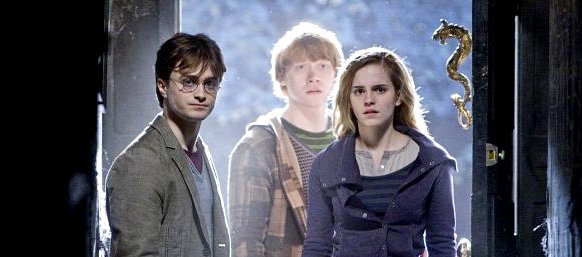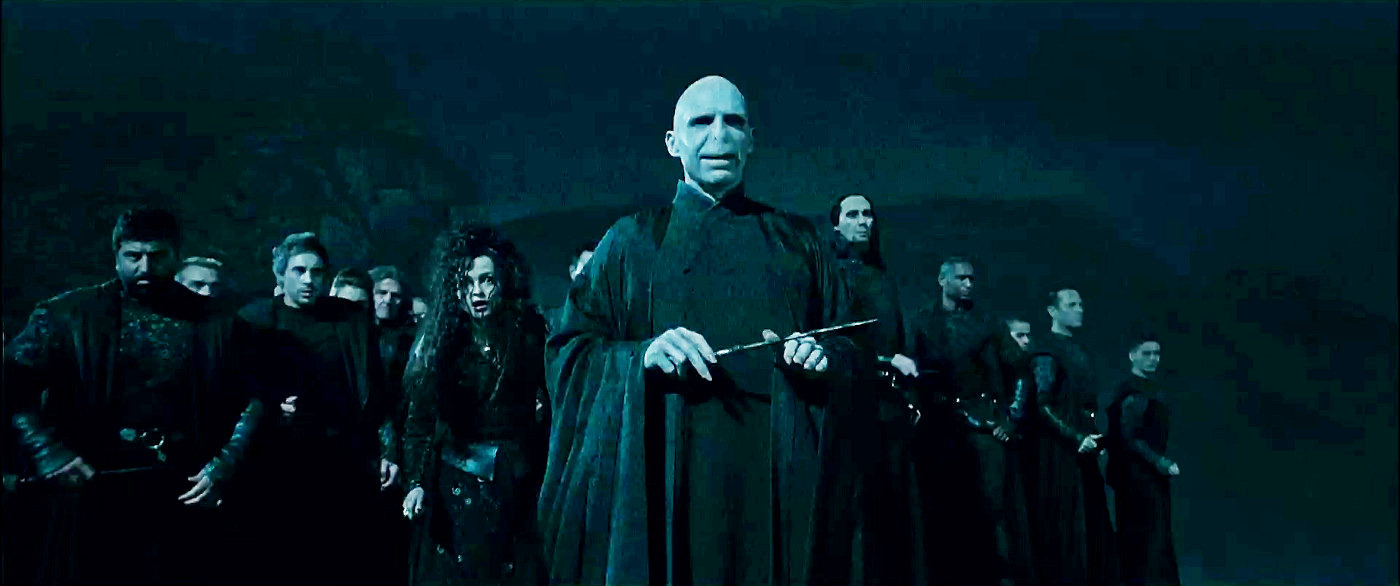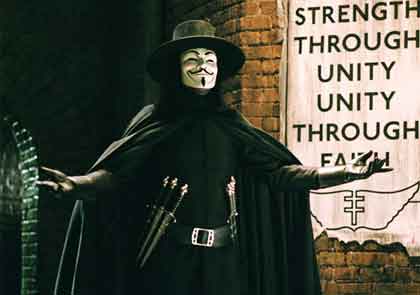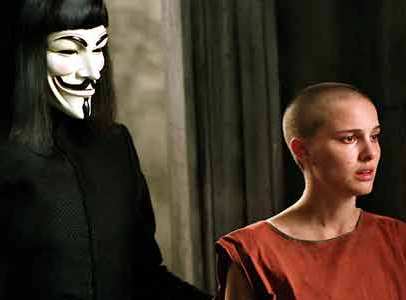
When reading the seventh and final Harry Potter tome in 2007, my sense was it felt more like a scriptment than a novel, and, tho’ often clunky as a book, it would probably work better as a movie a few years down the road. And, hey, I was right! (At least so far.) Even though it’s only half the story, and the leisurely camping half at that, David Yates’ Harry Potter and the Order of the Phoenix Part I is easily one of the best films in the series — perhaps the best, if you prefer your Potter relentlessly dark. (I know Cuaron’s Azkhaban has a following, but for me the real competition is Mike Newell’s Goblet of Fire.)
A hardy veteran of Dumbledore’s army at this point — this is his third Potter film in a row after Order of the Phoenix and the Half-Blood Prince — Yates has taken the often-unwieldy wanderings of the first half of Hallows and fashioned a lean, tense, and gripping fugitive story out of them. Better yet, he’s brought a much more palpable sense of danger and darkness to the proceedings. When I read the book, I missed Hogwarts most of the time and wondered why our heroes had to spend so much time camping. Here, the lack of Hogwarts goes unnoticed, and it’s abundantly clear why Harry, Ron, and Hermione spend so much time on the lam — They’re totally under the gun…er, wand.
That may be the part that rankles some of the youngest viewers out there, or their parents — From the creepier-than-usual Warner Brothers card on, the gloom here is unrelenting, and almost sadistic. Hallows begins with a Great Eye — that of the Minster of Magic (Bill Nighy), who’s making a Churchillian attempt to rally the wizarding world against the encroaching forces of Voldemort. (Good luck with that.) The Dark Lord (Ralph Fiennes), meanwhile, is entertaining his Death Eater shock-troops with a banquet at the Malfoys — one punctuated by the torture and eventual murder of Hogwarts’ Professor of Muggle Studies. She dies pleading for clemency from her former colleague, Severus Snape. (Clearly, she was new to academe.)
The Big Three are no happier. Harry (Daniel Radcliffe) is packing up and hiding the Dursleys somewhere safe from harm — It’s gotten so bad that he’s even nostalgic about his old room under the stairs. Hermione (Emma Watson) has resorted to wiping her Muggle parents’ minds of her existence. And Ron (Rupert Grint)…well, ok, like his older brothers, Ron is still a bit of a goof (at least until his arm almost gets ripped off in a freak disapparating accident later on.) And this, Ron’s injury notwithstanding, is all before Mad-Eye Moody (Brendan Gleeson) shows up at 4 Privet Drive with an army of returning cast members — or, as anyone who’s read the book knows, cannon fodder.
Granted, these supporting characters aren’t exactly Redshirts — we know most of them from the first six movies. Still, here is one of the situations where, to my mind, the movie rubs up against the limitations of the source material. There’s a line in Red Letter Media’s worthy evisceration of The Phantom Menace where the narrator makes the very valid point: “Qui-Gon Jinn and Obi-Wan Kenobi should have been combined into one character named…Obi-Wan Kenobi.” The same goes for the Potterverse.
By here in Book 7, several thousand pages into the tale of young Mr. Potter, the story is now totally crufted over with narrative stuff. Dozens of characters are running around already, and yet Hallows seems to pile on more every time our heroes get in a jam. (For example, Harry gets a tip from an old journalist friend of Dumbledores, whom we’ve never met, to go visit an old historian friend of Dumbledore’s, whom we’ve never met. Couldn’t one of these just have been Jim Broadbent’s Slughorn, from Book Six?)
We’re equally overstuffed here with magical Maguffins — Seven horcruxes and three hallows, not to mention three gifts from Dumbledore and various other wonderful toys, like Harry’s watchful mirror, Hermione’s infinite knapsack, and a steady supply of Polyjuice Potion. With so many magical items in play, the ground rules get fuzzy, and the sense of danger takes a hit. (Then again, they’re fuzzy anyway — Where can and can’t House elfs go again? And why aren’t our team using that highly convenient Room of Requirement from Book 5 to solve all of their problems?)
Still, one definite bright side of having so many populating the Potterverse is that the series continues to be a welcome full-employment program for British thespians. Bill Nighy and Rhys Ifans (as Xenophilius Lovegood, Luna’s dad) are the most prominent additions to the cast, but there are other fun faces joining the party this time, including David O’Hara (Braveheart) as Harry’s face in the Ministry, Guy Henry (Extras, Rome‘s Cassius) as Voldemort’s puppet minister, and Peter Mullan (Children of Men, Red Riding) as the Death Eater head of security.
On this front, the series is now an embarrassment of riches. When the likes of John Hurt and Miranda Richardson have all of fifteen seconds of screen time, and even the House elves are voiced by names like Simon McBurney (The Last King of Scotland, The Ghost Writer,) and Toby Jones (as Kreacher and Dobby respectively), you know you’ve got a heck of a cast on your ends. And the three kids have grown up to be no slouches in this department either. I can’t tell if they’re great actors, but they’re definitely very good at being Harry, Ron, and Hermione at this point.
So, in the end and despite its narrative over-packing, Deathly Hallows is an entertaining and scary ride with some very memorable setpieces. There’s an animated sequence late in the film that’s as beautiful and entrancing as anything we’ve seen in all seven movies thus far. And I was also fond of Harry, Ron, and Hermione’s assault on the Ministry, packed as it was sly allusions to Terry Gilliam’s Brazil. (Note the big statue, the gaggle of hangers-on breezing by, and Mullan being a man consumed with paperwork.) There’s still a lot of camping here, sure, but at least this time it feels less like aimless meandering and more like an urgent necessity. Let’s hope Yates and co. can land this magical bird in as fun a fashion next July.



